Vote No on AB 942: Defend Rooftop Solar Affordability
Redwood Energy reports on Clean Coalition’s expert commentary, warning that AB 942 threatens rooftop solar affordability and undermines the clean‑energy transition
Read article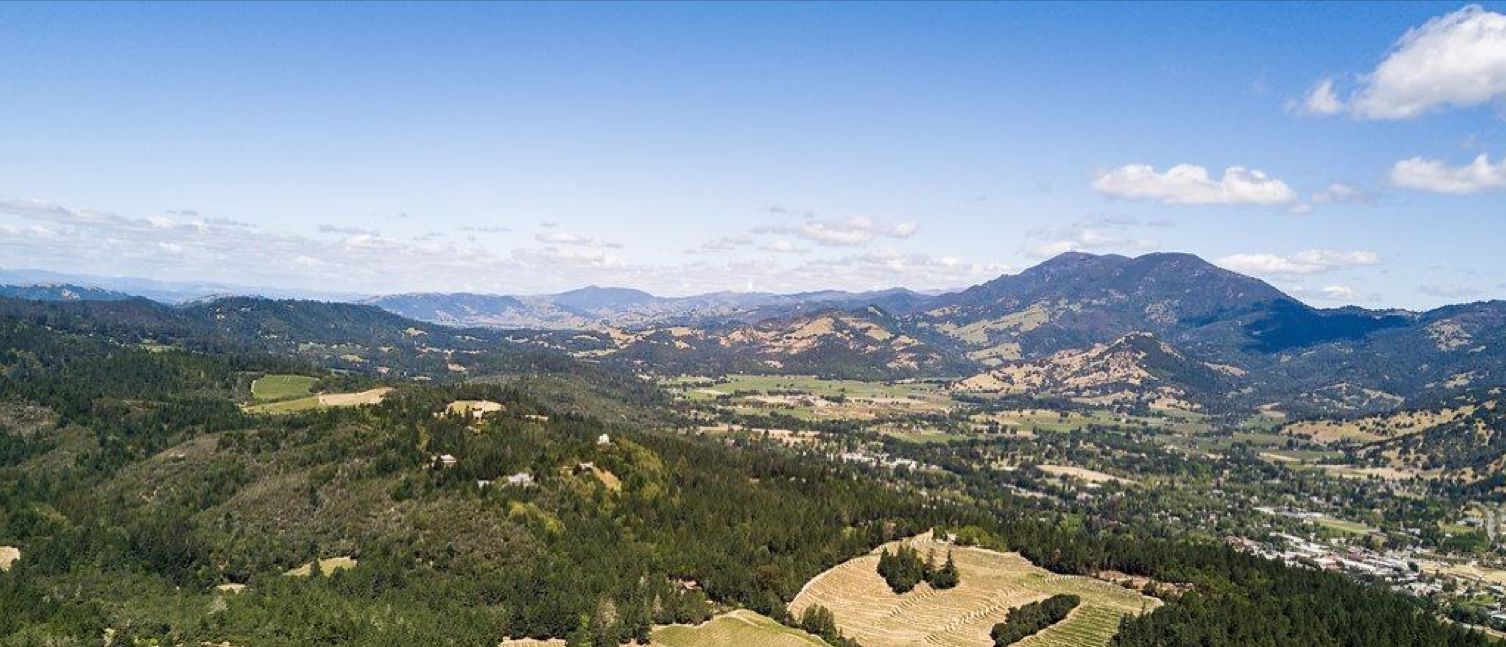
Building a resilient power system
The City of Calistoga is in a Northern California region of high wildfire risk. That means increased risk of power outages — which can make it harder to fight fires. Power outages also lead to lost revenue, disruption, and potentially even lost lives.
A Community Microgrid will protect the City from power outages related to wildfires — or any other disaster — as well as planned utility outages. This modern power system will bring Calistoga unparalleled economic, environmental, and resilience benefits.

Community Microgrids represent a new approach for designing and operating electric grids. A Community Microgrid is a coordinated local grid area served by one or more distribution substations and supported by high penetrations of local renewables and other distributed energy resources (DER), such as energy storage and demand response.
Although connected to the larger power grid, during a power outage a renewables-driven Community Microgrid can “island” from the grid and keep critical facilities like fire stations, hospitals, and emergency shelters online indefinitely.
In July 2019, the City of Calistoga entered into an agreement with the Clean Coalition to conduct a Community Microgrid feasibility assessment for the City.
The long-term vision for this Initiative is to develop a Community Microgrid serving the 2,285 electric accounts in the full Calistoga substation grid area.
This will be the first Community Microgrid to be developed as part of the North Bay Community Resilience Initiative.
Download a 2-page overview of the North Bay Community Resilience Initiative (PDF)
A Community Microgrid is a coordinated local grid area served by one or more distribution substations and supported by high penetrations of local renewables and other distributed energy resources (DER), such as energy storage and demand response.
Community Microgrids represent a new approach for designing and operating the electric grid, relying heavily on DER to achieve a more sustainable, secure, and cost-effective energy system while providing indefinite, renewables-driven backup power for prioritized loads.
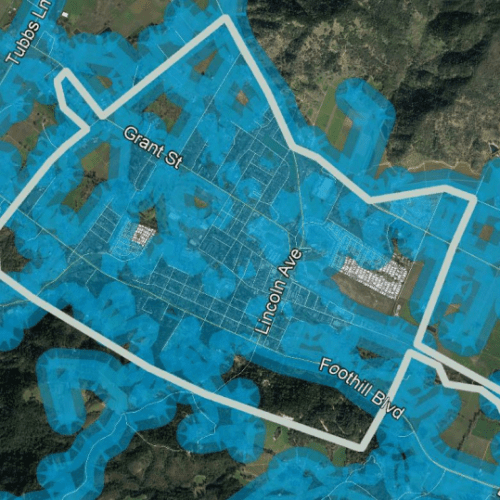
Highlighting the need for a Community Microgrid in Calistoga are the Public Safety Power Shutoffs (PSPS) planned by Pacific Gas & Electric (PG&E), the local utility, during times of high fire danger.
The City of Calistoga experienced two PSPS warnings in the fall of 2018, plus a 48-hour PSPS that disrupted the City and led to lost revenue for local businesses. With a severe fire season predicted for California in 2019, PSPS are likely to increase in frequency and duration.
Image: PSPS map of Calistoga — Source: PG&E
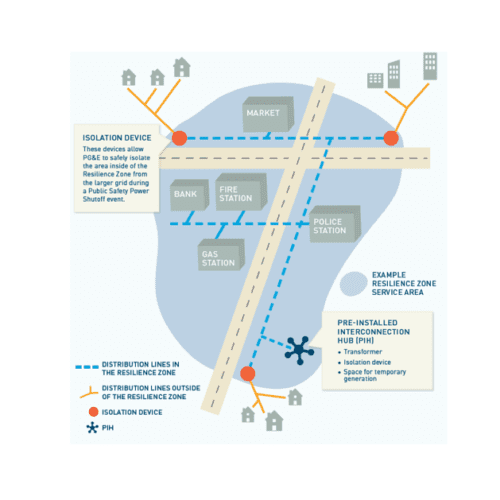
Setting the stage for Community Microgrids
PG&E is investigating grid isolation switches and PIH solutions for areas subject to Public Safety Power Shutoffs. Pre-installed interconnection hubs would enable mobile energy sources such as energy storage and/or diesel generators to interconnect to designated Resilience Zones during these planned outages, providing resilience to communities. The built-in islanding capabilities of grid isolation switches and PIH set the stage for the Calistoga Community Microgrid, and future Community Microgrids throughout California and well beyond.
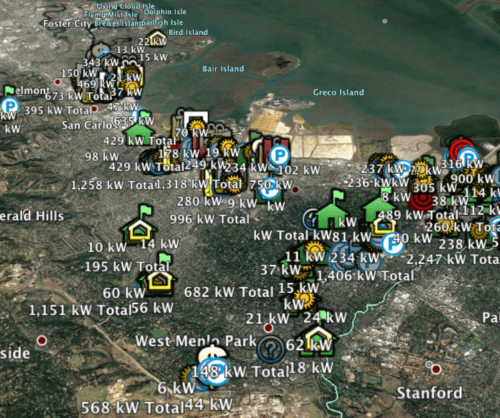
The project will begin with a site assessment. The Clean Coalition will conduct a Solar Siting Survey to identify the commercial-scale solar siting potential on built environments within Calistoga.
The site assessment will be followed by functional designs for six target microgrid sites and a broader Community Microgrid that serves the entire City of Calistoga. In addition, the Clean Coalition will engage key stakeholders in preparation for the next project phases: permit-ready, finance-ready microgrid designs and construction.
Image: Example of a Solar Siting Survey
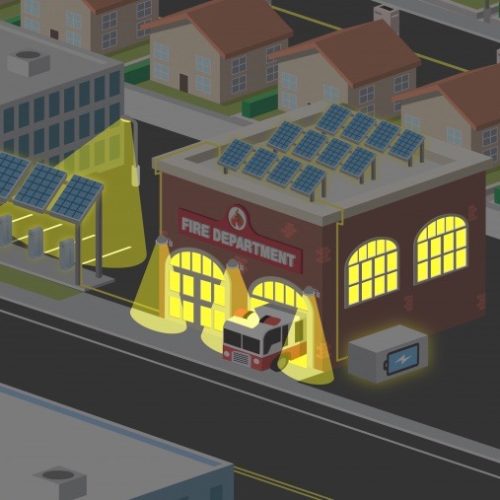
A Community Microgrid will ensure that Calistoga is prepared for PSPS and other potential grid outages. Community Microgrids provide many benefits:
The latest in clean local energy
Learn about our innovative projects and initiatives on our blog, and see what others are reporting about our important work.
Redwood Energy reports on Clean Coalition’s expert commentary, warning that AB 942 threatens rooftop solar affordability and undermines the clean‑energy transition
Read articleThis Clean Coalition hosted webinar took place on 27 June 2025 at 10:00 AM PST.
Read MoreThis blog post highlights the RGL Community Microgrid, which will provide clean energy and resilience to a disadvantaged community (DAC), utilize master metering, and serve as a critical model for future multi-unit housing (MUH) projects and master metering policies.
Read More